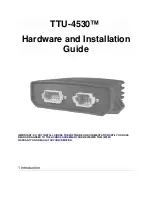
3.Polar alignment in the Northern Hemisphere
Position of Equatorial Telescope
Introduction of Reference Stars
First, install the tripod so that one of its legs faces the North
Star, and install the Skymemo RS with its polar axis oriented
roughly toward the North Star. Next, adjust the orientation of
the tracker accurately so that it faces the North Star directly
when viewed either from the top or the side.
4.Polar alignment in the Southern Hemisphere
Position of Equatorial Telescope
There is no bright star near the South Pole of the sky, so use a
compass and celestial map as a reference to set the polar axis.
Correction Method
Introduction of Reference Stars
The reticle pattern has auxiliary graduations for use in
correcting the change of precession for reference stars D
and E. Use these graduations to introduce the stars into
their respective positions as shown in the figure. For any
other year, introduce the reference stars into their
appropriate positions, which are determined by prorating
the intervals among the auxiliary graduations.
Correction Method
The reticle pattern has auxiliary graduations for use in correcting the change
of precession for reference stars B and C. Use these graduations to introduce
the stars into their respective positions as shown in the figure. For any other
year, introduce the reference stars into their appropriate positions, which are
determined by prorating the intervals among the auxiliary graduations.
Correction Method –
the Northern Hemisphere
The North Star is always introduced into gap A in the line
on the reticle pattern, but it will be introduced closer
toward center with the passage of years.
Correction Method –
the Southern Hemisphere
The Sigma Octantis is always introduced into gap G in the
line on the reticle pattern, but it will be introduced gradually
outward with the passage of years.
Find the “Southern Cross” and “Achernar” in the southern sky.
Next, look into the polar scope and turn the polar finder (reticle
rotation) until the actual directions of the Southern Cross and
Achernar match the corresponding directions on the reticle
pattern. (One can't actually see both the Southern Cross and
Achernar in the view field of the polar scope. Depending on the
location and time of observation, only one of them can be seen).
Unfortunately, there is no star as bright as the North Star near the
South Pole of the sky, so the “Octans 7 G, 10G, and
σ
” are used
as reference stars. Introduce the 7G in position D, 10G in position
E, in position F and
σ
in position G. All are dark, inconspicuous
stars of the fifth or sixth magnitude, so use their mutual positional
relationships and reference a celestial map, etc., to introduce each
star in the correct position. As a tip, confirm that the positions in
which the stars have been introduced do not change after
operating the Skymemo for a while. Once the reference stars have
been identified, simply repeat the adjustments until each of them
enters its respective introduction position.
Find the actual “North Star,” “Big Dipper” and “Cassiopeia”
in the northern sky.
Next, look into the polar scope and turn the polar finder (reticle
rotation) until the actual directions of the Big Dipper and
Cassiopeia match the corresponding directions on the reticle
pattern. (One can't actually see both the Big Dipper and
Cassiopeia in the view field of the polar scope. Depending on
the location and time of observation, only one of them can be
seen). By adjusting the polar finder (reticle rotation) as
mentioned above, you should see the reference stars in the view
field of the polar scope. The brightest star in the view field is the
North Star, so move the North Star up/down and to the left/right
by a small amount at a time until it enters gap A in the line on the
reticle pattern. This way the two remaining reference stars are
automatically adjusted in such a way that they're near B and C.
The North Star ( “Little Dipper ” ) at position A is abundantly bright.
However, the “Little Dipper
δ
” at position C is a type of double star in
that it's a star of the 4.4th magnitude having another star of about the
sixth magnitude moving with it at a distance of 24'. Therefore, one
shouldn't have any trouble finding the “Little Dipper
δ
” The Cepheus 51”
at position B is a dark star that isn't otherwise easy to spot, but it can be
found effortlessly based on its positional relationship with other stars.
Once these two stars have been identified, simply repeat the
adjustments until both enter their respective introduction positions.
2005
2010
2020
2030
2005
2010
2020
2030
8



























